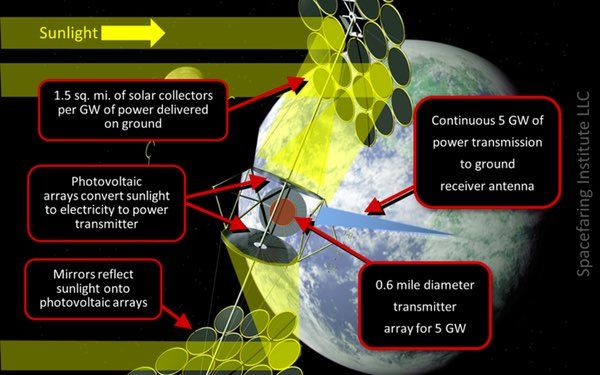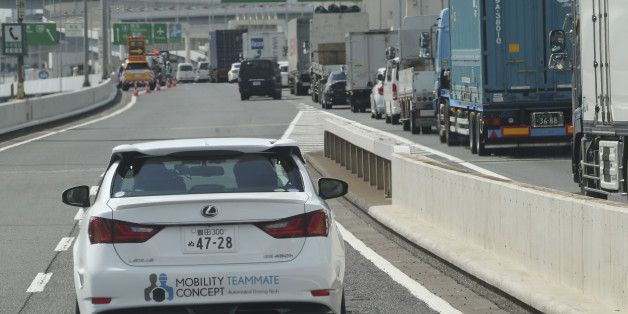Tech capital is first major US city to require all new buildings of 10 storeys or under to have solar panels, reports BusinessGreen.


Tech capital is first major US city to require all new buildings of 10 storeys or under to have solar panels, reports BusinessGreen.

“Inevitably, the compromises of the Paris Agreement make it both a huge achievement and an imperfect solution to the problem of global climate change.”

Although this article is over 5 days old plus talks about the risks identified by TechInsurance company; it does highlight the potential new wave of lawsuits in the years to come that we could see flood the law offices and courts around AI. Also, it will be interested to see over the next 5 years how laws, reg. compliance, etc. will evolve with the deployment of AI.
Technology insurance provider reminds IT businesses that technical glitches and customer behavior are significant sources of risk.

“Virtually all new fossil fuel-burning power-generation capacity will end up “stranded”. This is the argument of a paper by academics at Oxford university. We have grown used to the idea that it will be impossible to burn a large portion of estimated reserves of fossil fuels if the likely rise in global mean temperatures is to be kept below 2C. But fuels are not the only assets that might be stranded. A similar logic can be applied to parts of the capital stock.”

What if prospective parents had the opportunity to make decisions ahead of time about the combination of genetic traits their child would inherit? The question is more than science fiction, says Hank Greely, a law professor at Stanford University.
The underlying science and technology are advancing rapidly—and now is the time to consider carefully “what kind of legal changes would be necessary to try to maximize the benefits and minimize the harm of this new approach to making babies,” he says.
Greely explored the legal, ethical, and societal implications of emerging biotechnologies for a new book, The End of Sex and The Future of Human Reproduction (Harvard University Press, 2016), that envisions a world where procreation may not start in bedrooms, but rather in a petri dish in a medical clinic.

The United States is transitioning from a primary reliance on fossil fuels to greater use of sustainable natural and nuclear energy sources. There are two reasons for this transition. The first reason is that the abnormally high and increasing level of atmospheric carbon dioxide has created scientific uncertainty and concern as to the detrimental impact this may have on the environment and, consequentially, human civilization. Almost certainly, this abnormal level is due to anthropogenic causes linked to the tremendous expansion in the human population since the early 1700s, the growth of human civilization (e.g., agriculture and industrialization), and the increasing use of fossil fuels. Although fossil fuels have enabled worldwide progress in elevating the standard of living, most of the world’s nations have reached the conclusion that the world should transition entirely to sustainable energy by 2100 (see “The Paris climate agreement and space solar power”, The Space Review, February 29, 2016). It is, however, very important to manage this transition carefully to avoid economic hardship or energy deprivation.
While the United States has large remaining fossil fuel resources, only some are technically recoverable with current safe, legal, and profitable extraction methods. The remaining known and yet-to-be-discovered domestic technically recoverable fossil fuels are inadequate to sustain US fossil fuel energy needs to the end of this century, especially given likely continued immigration-driven US population growth (see “US fossil fuel energy insecurity and space solar power”, The Space Review, March 7, 2016). While the United States has an ethical environmental obligation to end its use of fossil fuels by the end of the century, the reality of having inadequate oil and natural gas resources makes the urgency of transitioning successfully to new sustainable energy sources a clear matter of national energy security. This warrants federal government leadership and strong American private sector engagement.
Unfortunately, due to its large and growing population and per capita energy needs, the United States lacks sufficient suitable land to utilize terrestrial renewable energy to replace fossil fuels. (see “US terrestrial non-fossil fuel energy vs. space solar power”, The Space Review, March 14, 2016). While the United States will utilize terrestrial domestic renewable energy to the extent it is politically acceptable, many factors will likely limit their scale-up. The expansion of nuclear fission energy is also not a satisfactory approach, given the large number of reactors needed. These factors lead to the conclusion that only space-based sustainable energy, such as space solar power, will enable the United States to practically transition away from fossil fuels.

Good read; and highlights fair arguments around science and technology innovations and their patents. CRISPR was highlighted; however, the same can be applied to things like AI. What happens when a Humanoid robot owned by an investment bank innovates and develops new technology for Wall Street? The humanoid robot was (in this example) created by Microsoft; however, is owned by a Goldman Sachs. Who truly owns this new technology innovation? Could we see Goldman Sachs owning 70% of the patent & Microsoft owning 30%?
The worlds of science, technology and patent law eagerly await the U.S. government’s decision on who deserves patents on what many have referred to as the biotechnology invention of the century: the CRISPR/Cas9 gene-editing technique.
Scientists hail CRISPR/Cas9 as more accurate and efficient than other, now-traditional genetic engineering methods. As a result, CRISPR has generated worldwide debate about how it could accelerate the manipulation of plants, animals and even human beings at the molecular level. That some DNA modifications can be passed on to future generations raises particular concern.
But the patent dispute, focusing on whether scientists at the Broad Institute of MIT and Harvard or those at University of California, Berkeley invented the technology, seems far from these ethical concerns. Each institution asserts that its scientists are the rightful inventors — and therefore the owners of the CRISPR/Cas9 patents. As proof, the scientists are submitting their published articles, laboratory notebooks and affidavits to the US Patent and Trademark Office, which will make a decision in the next few months.

The momentum of self-driving cars on the road is accelerating with the question clearly becoming “when” not “if” the widespread use of self-driving cars will be allowed. A 2015 Business Intelligence Report forecasts a compounded annual growth rate of 134% from 2015 to 2020 with at least 10 million cars on the road by 2020.
This should not come as a surprise, the descriptors for a car are heavily technology based with the importance of the car’s brains (software) rivaling its brawn (styling). Cars are already equipped with the ability to conduct specific tasks with varying degrees of driver interaction such as fully autonomous emergency breaking and semi-autonomous driver assisted parallel parking that are performed more adroitly — and safely — then the vehicle is operated by the driver. But the narrative of the self-driving car isn’t evolutionary but thought of as leapfrogging breakthroughs. Perhaps what has painted the imagery with futuristic color is the vocabulary of artificial intelligence. Fully autonomous driverless cars such as Google’s use an artificial intelligence system to pilot the car. In February the National Highway Traffic Safety Administration posted on its website that it informed Google that the artificial intelligence system pilot in a self-driving Google car could be considered the driver under federal law.

“Modern life relies on satellite sytems but they are alarmingly vulnerable to attack as they orbit the Earth. Patricia Lewis explains why defending them from hostile forces is now a primary concern for states”

EU Justice Ministers Claims Cyber Attackers are terrorists. I wouldn’t say all of them are terrorists. Those who attack hospitals, attack government infrastructures, threaten markets, etc, are terrorists. The next door neighbor’s 13 yr old kid hacking to use your wireless internet service; not a terrorist.
European Union justice ministers on March 11th adopted a general approach on the directive on combatting terrorism, including serious cyber crimes, informs LETA/BNS.
On Friday the council greed its negotiating position on the proposal for a directive on combatting terrorism. The proposed directive strengthens the EU’s legal framework in preventing terrorist attacks by criminalising preparatory acts such as training and travel abroad for terrorist purposes – hence addressing the issue of foreign fighters – as well as aiding and abetting, inciting or attempting such acts. It also reinforce rules on the rights for the victims of terrorism, the Ministry of Justice said.
Estonian Justice Minister Urmas Reinsalu said in a speech at the Justice and Home Affairs Council that for Estonia it is very important that justice ministers were able to agree on defining serious terrorist cyber attacks as terrorist crimes. This gives the EU additional legal tools in such situations as the cyber attacks that followed the so-called Bronze Night riots that took place in Tallinn in April 2007, he added.